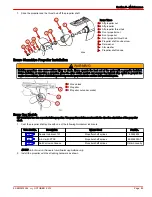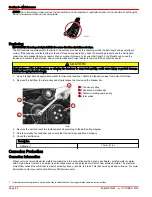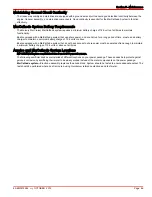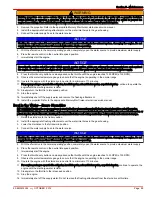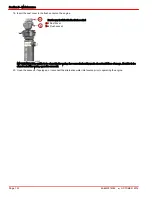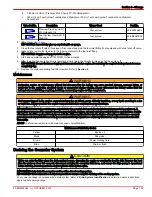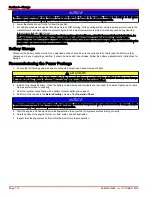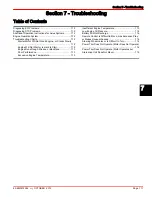
Section 5 - Maintenance
90-8M0074352
eng
OCTOBER 2012
Page 97
NOTICE
Disconnecting the seawater inlet hose will cause water to enter the bilge resulting in engine damage. Close the seacock
before disconnecting the seawater inlet hose. Plug the seawater inlet hose immediately after disconnecting it.
2. Close the seacock, if equipped, then disconnect the seawater inlet hose to prevent water from siphoning into the engine or
boat.
3. If not equipped with a seacock, disconnect the seawater inlet hose from the seawater pump and immediately plug the hose
to prevent water from siphoning into the engine or boat.
4. Using a suitable adapter, connect the flushing hose from the water source to the water inlet of the seawater pump.
NOTICE
Flushing the engine when it is not operating will result in water collecting in the exhaust system, damaging the engine. Do not
supply flush water for more than 15 seconds without the engine operating.
5. With the sterndrive in the normal operating position, completely open the water source to provide maximum water supply.
6. Place the remote control in the neutral idle speed position.
7. Immediately start the engine.
NOTICE
Operating the engine out of the water at high speeds creates suction, which can collapse the water supply hose and overheat
the engine. Do not operate the engine above 1400 RPM out of the water and without sufficient cooling water supply.
8. Press the throttle only button and slowly advance the throttle until the engine reaches 1300 RPM (± 100 RPM).
9. Observe the water temperature gauge to ensure that the engine is operating in the normal range.
10. Operate the engine with the sterndrive in neutral for a minimum of 10 minutes.
11. For engine packages operated in saltwater, brackish water, mineral‑laden water, or polluted water, continue to operate the
engine until the discharge water is clear.
12. Slowly return the throttle to the idle speed position.
13. Stop the engine.
14. Immediately shut off the supply water and remove the flushing attachment.
15. Tag the ignition switch with an appropriate tag requiring the seacock to be opened or the seawater inlet hose to be
reconnected before operating the engine.
SeaCore Power Package Flushing Procedure
NOTE: Flushing is needed only for salt, brackish, mineral laden or polluted water applications. Flushing is recommended after
each outing for best results.
IMPORTANT: Flushing the SeaCore power package with the boat and sterndrive in the water is less effective. Flushing the
SeaCore power package is most effective when performed with the boat and sterndrive out of the water, such as on a boat lift
or trailer.
Models Using the Sterndrive Water Pickup
IMPORTANT: The system is designed to flush the Bravo sterndrive and the engine with one water source. Do not block or
remove the inlet water hose from the sterndrive to the engine.
NOTE: Engines with the sterndrive water inlet blocked off at the gimbal housing: Refer to
Alternative Water Pickups
.
!
WARNING
Rotating propellers can cause serious injury or death. Never operate the boat out of the water with a propeller installed.
Before installing or removing a propeller, place the drive unit in neutral and engage the lanyard stop switch to prevent the
engine from starting. Place a block of wood between the propeller blade and the anti‑ventilation plate.
IMPORTANT: Do not allow the engine to pull air or seawater from alternative water pickup sources during the flushing
procedure. If equipped, ensure that all alternative water inlet hoses are plugged at both ends.
1. Remove the boat from the water.

